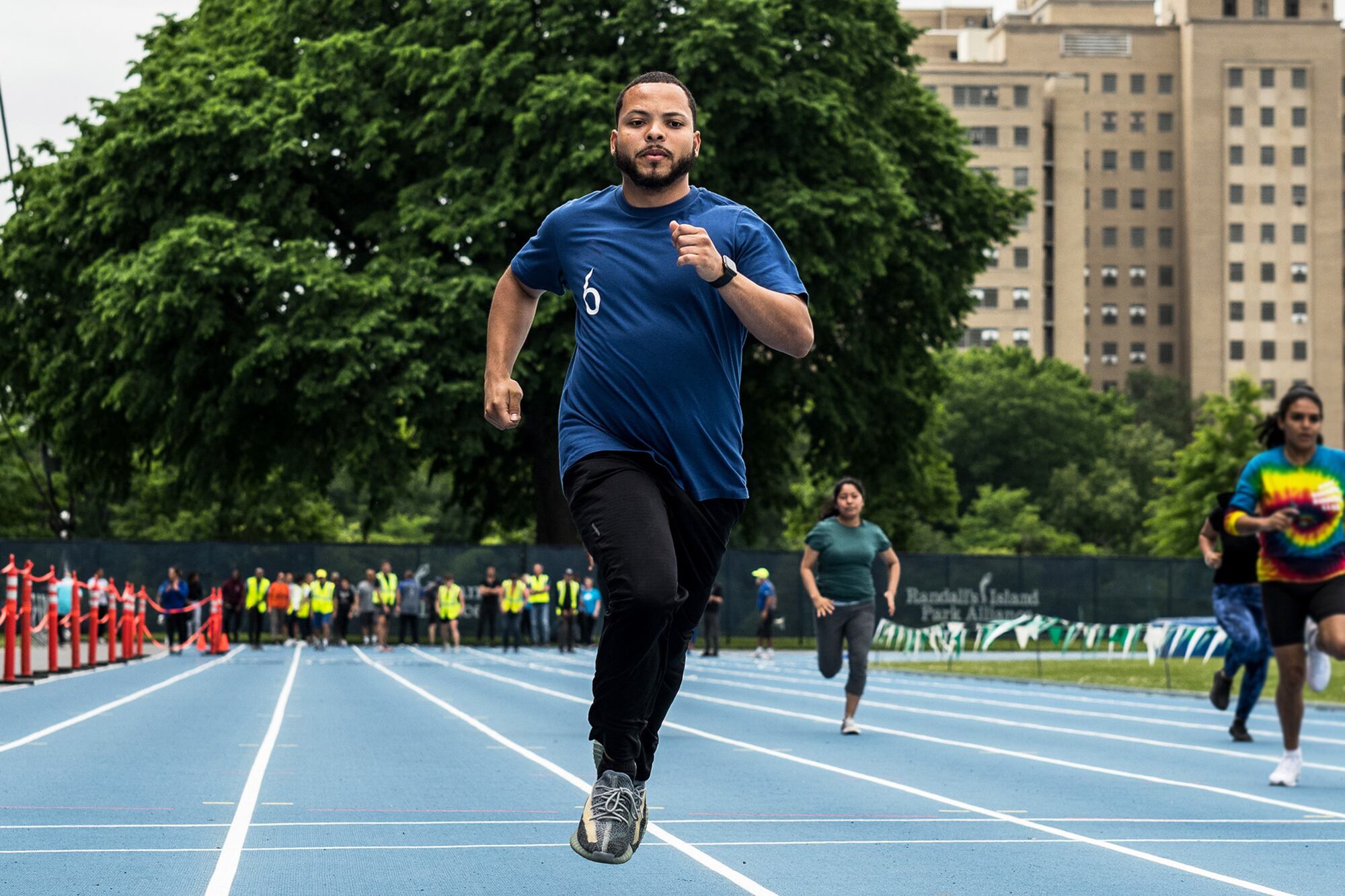Running track changed the course of Elías Cruz’s life.
At his Bronx middle school, Cruz joined a track team started by his English teacher. Now a Bronx middle school English teacher himself, Cruz started a running team for his students in the fall of 2021.
He credits his middle school English teacher, Shawanda Weems, who started a track team at P.S./M.S. 15 through the Rising New York Road Runners’ free youth program. Besides its robust youth programming and races that Cruz’s students are training for, the New York Road Runners is renowned for hosting the TCS New York City Marathon; this year, the marathon is scheduled for Nov. 5.
Cruz recounted how he and his friends wanted to become fast runners, so they joined the running group immediately.
“Looking back on that one decision, it changed my life in countless ways,” Cruz said.
Cruz started teaching six years ago at New School for Leadership and the Arts, near where he grew up in University Heights. He became an English teacher, like his first coach, Weems, who continues to offer him mentorship and advice.
Cruz brought the Rising New York Road Runners program to his students about two years ago, when school buildings reopened to all students after the majority of New York City children learned remotely for more than a year.
Worried how the students would transition back to being in person after prolonged isolation, he thought track could be as transformative to his middle schoolers as it was for him.
“The need to develop their social-emotional skills, teamwork, and help them improve their physical and mental health was at the forefront of my thoughts,” he said. “It triggered the memory of middle school track with Ms. Weems.”
As a student on the track team, he bonded with friends outside of the classroom. They began to think about their health and what they were eating, and they formed “lifelong memories” at their track meets, Cruz recounted. His middle school teammates, Cris, Jose, and James, continue to be a “huge” part of his life.
“Till this day,” Cruz said, “we still speak of the many races at Central Park, Washington Heights, the dreaded hills of Van Cortlandt Park, the meets at Icahn, and the bus rides back to school after a day running.”
This interview has been lightly edited for length and clarity.
It’s amazing to hear that you still live and teach in the neighborhood where you grew up. How and when did you decide to become a teacher?
During my high school years, my track team would practice Monday through Thursday, and I would write down all our workouts, drills, stretches, and my own personal times in a little notebook. Every Friday I would go back to my middle school and help the younger runners — help them improve with what I learned. I would demonstrate to them how to do new drills, how to improve their form on old drills, and help them improve on their own individual events they wanted to run at their track meets.
Little did I know, I was already forming a culture of teaching within myself.
What’s your favorite lesson to teach and why, whether in the classroom or the field?
During our track practices, I love when we do our buddy runs. For this activity, the upperclassmen must find a buddy in the sixth or seventh grade and run with them for the practice. You can actively see the upperclassmen not only mentor the younger runners but also teach them all the skills I have taught them over years.
What’s something happening in the community that affects what goes on inside your school?
Our school is located in the northwest section of the Bronx. We are able to go outside for runs, have practices in local parks, and walk to some of our track meets at Van Cortlandt Park. Even with all these great benefits, we cannot escape the economic perils that hold back many Bronxites.
Our first year with the Rising New York Road Runner program, we began with a core of around 15 students. The following year, 2022-2023, our numbers ballooned to 40 or so students. After our first month of practice, it was immediately clear that we had a nutrition and running attire issue.
With so many of our student-athletes living severely under the poverty line, it was almost impossible for all of them to go out and purchase running sneakers, something they drastically needed. I still remember one of our returning runners confessing to us that he had to stop running because his feet were in too much pain for him to keep on going any longer.
Thankfully, with the partnership of the New York Road Runners, we were able to gift to our runners and many from our school student population brand new New Balance running sneakers.
What’s the best advice you’ve ever received, and how have you put it into practice?
The best advice I’ve ever had is to make anything you do in the classroom or in practice engaging. A student who can’t wait to accomplish a goal is a student who has bought into your program and philosophy.
Have you ever run the NYC marathon?
Next year will be my first-ever marathon. I took a break from running to focus on teaching and just recently began running again. Slowly ramping up my mileage in hopes that in 2024, I cross the finish line of the New York City Marathon.
Amy Zimmer is the bureau chief for Chalkbeat New York. Contact Amy at azimmer@chalkbeat.org.








